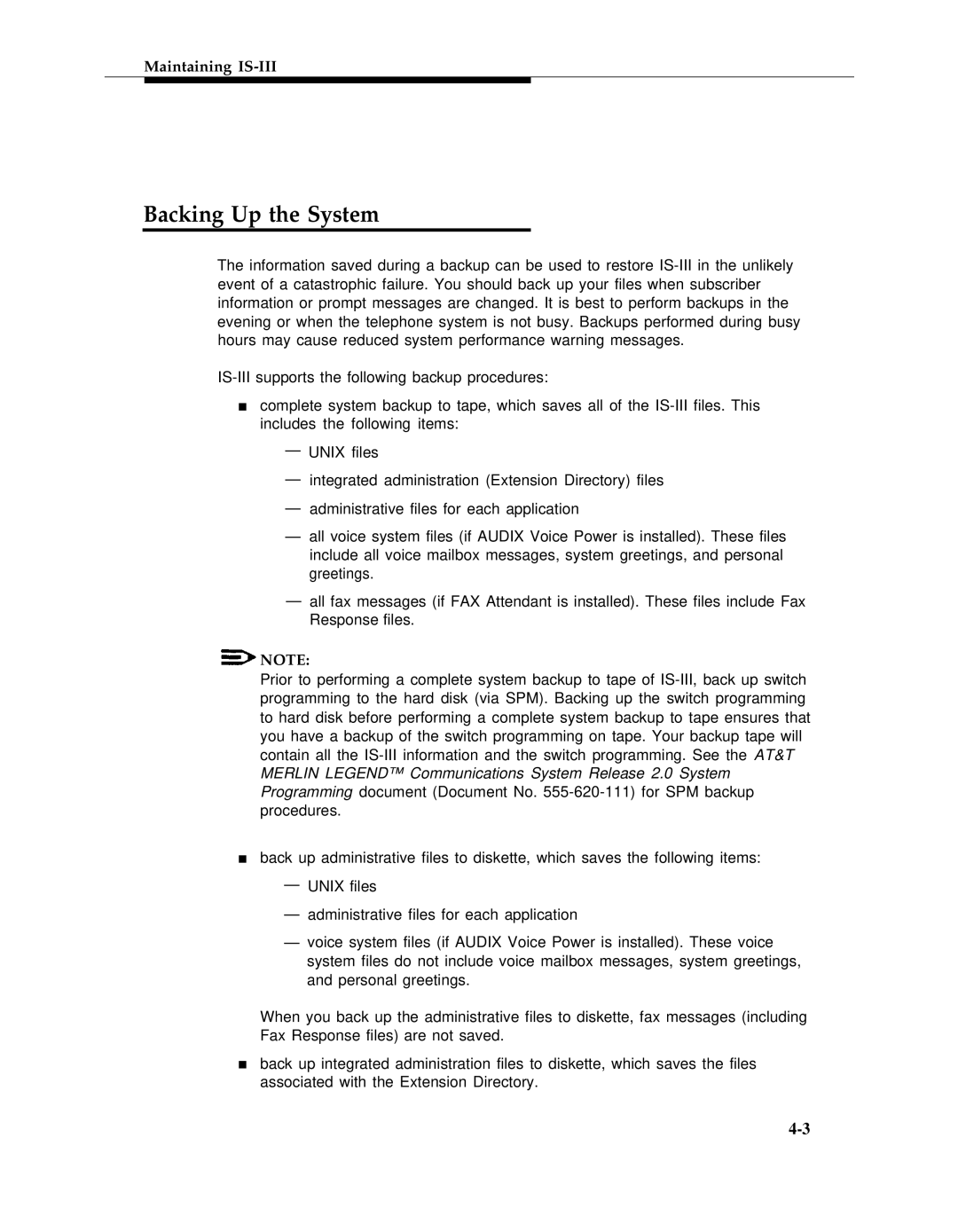
Maintaining IS-III
Backing Up the System
The information saved during a backup can be used to restore
■complete system backup to tape, which saves all of the
—UNIX files
—integrated administration (Extension Directory) files
—administrative files for each application
—all voice system files (if AUDIX Voice Power is installed). These files include all voice mailbox messages, system greetings, and personal greetings.
—all fax messages (if FAX Attendant is installed). These files include Fax Response files.
![]() NOTE:
NOTE:
Prior to performing a complete system backup to tape of
■back up administrative files to diskette, which saves the following items:
—UNIX files
—administrative files for each application
—voice system files (if AUDIX Voice Power is installed). These voice system files do not include voice mailbox messages, system greetings, and personal greetings.
When you back up the administrative files to diskette, fax messages (including Fax Response files) are not saved.
■back up integrated administration files to diskette, which saves the files associated with the Extension Directory.
